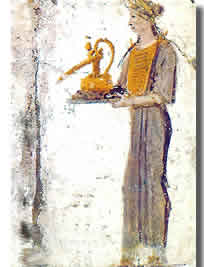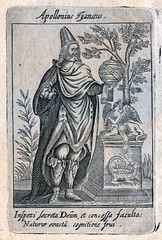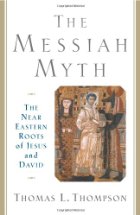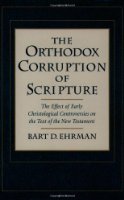*
Mythicist Inventions: Part One – Creating the Mythical Christ from the Pagan Mystery Cults
.
COVERED IN THIS POST:
- Jesus as a dying and rising god
- Common creations of the religious mind
- The demise of James Frazer’s The Golden Bough
- The case for borrowing lies in syncretism
- Jewish and Greek forms of resurrection
- Paul on Jesus’ resurrection as “firstfruits”
- Jonathan Z. Smith’s case against dying and rising gods
- The resurrection of Adonis: did the mysteries copy Christianity?
- Gunter Wagner on discrediting the mysteries
- The appeal of the mysteries
- The lack of evidence on the mysteries
- Historicist methodology and a Jewish camouflage
.
* * * * *
Mythicist Inventions: Creating the Mythical Christ
(Did Jesus Exist? pp. 219-230)
.
If there has been one paramount apologetic concern in the long combat against Jesus mythicism, it has been the need to discredit any thought of Christian dependence on the Hellenistic savior god traditions. This has led historicism to adopt a ‘scorched earth’ strategy. Not only must any dependence on the mystery cults be refuted on Christianity’s own turf, the war has been carried further afield in an attempt to eliminate even the alleged sources. Thus, the armies of Christian independence are dispatched to the enemy’s home territory, there to destroy its own precepts.No longer do the mysteries believe in dying and rising gods; no longer are they based on the cycle of agricultural death and rebirth; no longer do they practice rites which could have resembled and influenced the Christian one; no longer do they even worship such deities.And no longer do ancient Christians contemporary with the mysteries genuinely know anything about them.But the mysteries knew about Christianity, and they liked what they saw so much that they recast their own ancient beliefs in imitation of the Jesus story. |
.
“Did the Earliest Christians Invent Jesus as a Dying-Rising God, Based on Pagan Myths?”
Having asked that question, Ehrman presents the situation this way:
ONE OF THE MOST widely asserted claims found in the mythicist literature is that Jesus was an invention of the early Christians who had been deeply influenced by the prevalent notion of a dying-rising god, as found throughout the pagan religions of antiquity. The theory behind this claim is that people in many ancient religions worshipped gods who died and rose again: Osiris, Attis, Adonis, Tammuz, Heracles, Melqart, Eshmun, Baal, and so on. Originally, the theory goes, these gods were connected with vegetation and were worshipped in fertility cults. Just as every year the crops die in winter but then come back to life in the spring, so too with the gods who are associated with the crops. They die (when the crops do) and go to the underworld, but then they revive (with the crops) and reappear on earth, raised from the dead. They are worshipped then as dying-rising deities. (DJE?, p. 221)
According to Ehrman, the view of almost all mythicists is that Jesus is an artificial Jewish version of a dying and rising deity of the above type; the significant parallels between the mysteries and the Jesus story prove this claim.
But this is something of a straw man. It envisions that some founder of the movement, or some Jewish study group (a scriptural book review club perhaps?), consciously sat down and ‘invented’ a new version of an old religion by emulating the latter’s features. Occasionally this sort of thing may happen (Ptolemy I deliberately syncretizing two gods into one to create a national-unity religion, or Joseph Smith inventing the whole gold plates business). But more often than not it is ‘in the air’ concepts and expressions that throw up a new set of ideas and interpretations within a break-away group or a particular cultural or sectarian entity.
.
Common inventions of the human mind
.
 Almost every sect that looks back to a divine event or interaction with a deity develops a sacred meal as a commemorative thanksgiving or ritual reflection. (What is more fitting, or available, to give to a god than food and drink, or more traditionally associated with a god’s own nature and bounty?)
Almost every sect that looks back to a divine event or interaction with a deity develops a sacred meal as a commemorative thanksgiving or ritual reflection. (What is more fitting, or available, to give to a god than food and drink, or more traditionally associated with a god’s own nature and bounty?)
If the most fundamental religious impulse is to find a way to believe in a life after death, this is almost inevitably going to take the form of creating a deity who will bestow such a thing; and given our mystical predilections it should not be surprising that a process many would tend to come up with is the principle of the god undergoing the desired goal himself. It would indeed take a god to conquer death, but if we could just find a way to ride through that formidable barrier on his divine coattails. . . .
This is one mythicist who does not overplay the ‘deliberate borrowing’ principle to explain the origins of Christianity. Continue reading “26. Earl Doherty’s Response to Bart Ehrman’s Case Against Mythicism – Part 26”




